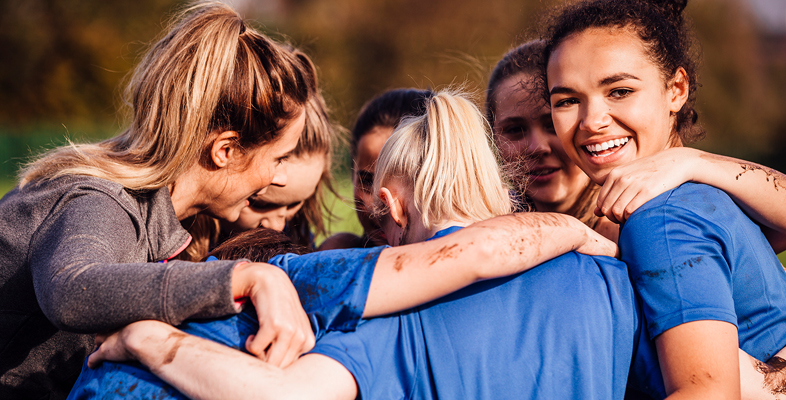6 What conversations do coaches and psychologists have?
In the two activities that follow, you are placed into two very different sporting environments to consider the types of topics coaches and psychologists might discuss.
Activity 4 Injury rehab in rugby: keeping it personal
Watch the following video, which shows two coaches, a sport scientist and a head of medical, outline the technology used with injured players at Saracens, a championship-winning rugby club.
Transcript: Injury rehab in rugby: keeping it personal with devices and data
[MUSIC PLAYING]
How does technology support the rehabilitation of injuries and what injury-related topics might the coaches and psychologist discuss off-screen?
Discussion
Devices and data at Saracens contribute to monitoring each individual training load and help design an appropriate intensity of training. In this situation, a coach and psychologist might discuss the balance between physical challenge and the amount and type of support provided by those around the injured players. If you have ever had an injury, you will appreciate that there is a mental aspect to getting over the injury and fears that it may reoccur. Academic research is increasingly influencing the psychological aspects of recovery.
In this next sporting environment, technology is used to identify and develop talent.
Activity 5 2020 vision: exploring talent development for Tokyo
Watch the video Are these future gold medallists? [Tip: hold Ctrl and click a link to open it in a new tab. (Hide tip)] . It features the four-phase Girls4Gold talent identification programme for canoeing, which is aiming to develop female athletes for the Tokyo 2020 Olympic Games. As you watch the video consider:
- i.how coaches, using their knowledge of psychology, designed an environment that was mentally and physically challenging
- ii.what those leading the programme were looking for in the athletes.
Discussion
- i.The characteristics of the learning environment were all about providing challenges and learning opportunities in a structured way. The fact that this was held in colder winter months, living and training away from home and learning a new skill in front of others made it more demanding.
- ii.The coaches were looking for the athletes’ determination to continue despite setbacks, their willingness to learn and accept coaching guidance and their ability to set realistic goals.
If you are interested in finding out more, take a look at the article London 2012 champion launches new Girls4gold Talent ID campaign.
Alex describes her experiences with regards to the previous activity in the box below.
Alex says …
Five months before the Olympic Games, I dislocated my thumb, rupturing my ulnar collateral ligament. This required surgery and a 12–16 week rehab period. At the time, my initial thoughts were negative, full of worry and my mind was telling me that I would not make it back in time for Rio. Very quickly, with the support of our sports psychologist, Andrea Furst, and coach, Danny Kerry, I had set myself some challenging goals that would maintain my focus and put me in the best physical shape to aid my return. Working closely with our strength and conditioning coach, Tom Drowley, on a daily programme, I was able to continue with many areas of my physical development.
I completed a monitoring form every morning that Danny, Andrea and Tom could all access, which presented my physical condition, tiredness, wellbeing, motivation and all the training I undertook. This joined-up approach of coaching meant I was well supported and the coaches at all times knew about my training load and my wellbeing. The collection of data and monitoring, as well as good communication between all coaches, was paramount to my rehabilitation. It ensured I still felt part of the team, was supported, made progress and returned on schedule.
You can begin to see that coaching and psychology interact when challenge is appropriately applied with individual goal setting. Coaches and teachers can support rich learning environments with good coach/teacher–athlete/pupil relationships.
